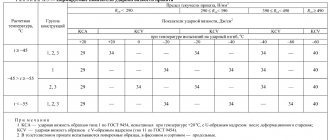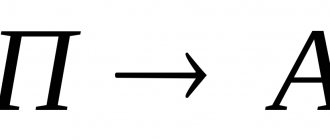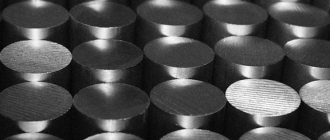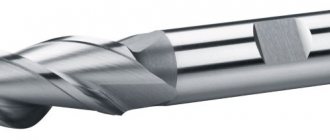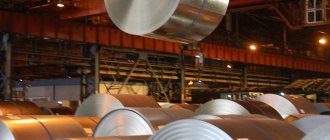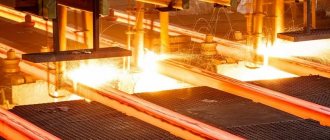All types of rolled metal are subject to marking, which contains information about the composition of the alloy, the content of additives, quality, and degree of deoxidation. If there is no such mark or an old metal structure is used, then the question arises of how to determine the grade of steel without laboratory testing. The grade of the alloy is determined by the qualitative and quantitative chemical composition and its hardness. If you know exactly these two indicators, you can accurately identify the metal.
The chemical composition shows the base metal, alloying and general characteristics. And hardness depends on production technology and additional processing.
In laboratory and production conditions, X-ray fluorescence spectrometry, large-metric titration, test cutting methods, and testing on an emery wheel are used. Some methods can be used for independent analysis.
Determination by spark
Spark tests are used for tool, structural, and high-speed steel. If you follow the instructions, this method gives a fairly accurate result. An emery wheel is used to carry out the experiment. When the workpiece comes into contact with it, sparks are formed, which differ in shape and shade. To increase the accuracy of the result, machines with different wheels and control samples of the alloy are used.
Based on the color, number, and shape of the stars, conclusions are drawn about the content of carbon, chromium, nickel and other chemical elements. If the structural grade contains a significant amount of carbon, then it will have the same sparking as the instrumental one.
The amount of carbon can be inferred from the density and number of spark branches. In a low-carbon alloy, sparks have a rich, dark yellow color, in a tool alloy - pale yellow, in a high-speed alloy - dark red.
Types of sparking for alloys of different grades:
- continuous lines of a yellowish tint interspersed with small stars - low-carbon;
- light yellow sheaf with a bright sparkle at the end - contains 0.5% carbon;
- dense, rich red lines with a large number of yellow stars – chromium-containing;
- wide dark yellow stream without sparking at the end - high-speed, with the addition of cobalt.
Sometimes you have to carry out welding work without any information about the material being welded. This article will help you use the “old-fashioned” method to determine the grade of steel by sparks on an abrasive wheel, and also to evaluate whether it is worth taking up welding in a particular case. Weldable without restrictions (steels that can be welded using common welding methods, usually without heating or heat treatment)
Steel grades St2 and StZ - sparks are light yellow, the branches are somewhat more developed and thinner than the thread itself; There are arrows at the ends of the sparks, there are no stars. At the beginning of the spark there is a red-yellow beam from the touch of the workpiece to the abrasive wheel
Steel 10 - light yellow sparks with a small number of branches, a small number of elongated stars, the tips of the threads are sharp, in the middle of some stars there are weak red-yellow tufts. At the beginning of the spark there is a red-yellow beam from the touch of the workpiece to the abrasive wheel
Steel grades 15, 20 - light yellow sparks, more branches and stars than steel 10, but there are less than three to five red-yellow tufts in the stars. At the beginning there is a beam from the touch of the workpiece to the abrasive wheel
Steel grades 25, 30 - sparks are light yellow, there are many branches, dense stars, the ends of the threads are thin, many stars have red-yellow grains in the form of peas. At the beginning of the spark there is a red-yellow beam from the touch of the workpiece to the abrasive wheel
Armco Iron (Steel 10895) - light yellow straight sparks without branches with two or three short red threads in the middle. At the beginning of the spark there is a red-yellow beam from the touch of the workpiece to the abrasive wheel
Steel 12Х18Н9 - sparks are light yellow, short, in small quantities, almost without branches, with a red-yellow beam at the end of the branch and three to five small red grains at the branches. At the beginning of the spark there is a red-yellow beam from the touch of the workpiece to the abrasive wheel
Limited weldability (steels that can be welded using common welding methods; as a rule, preheating and subsequent heat treatment are required)
Steel 12X13 - sparks are light yellow, short, with small bunch-like branches, with small red grains. At the beginning of the spark there is a red-yellow beam from the touch of the workpiece to the abrasive wheel
Steel 12ХНЗА - sparks are yellow, the branches are more developed and thicker, there are arrows at the ends of the sparks, there are no stars. At the beginning of the spark there is a red-yellow beam from the touch of the workpiece to the abrasive wheel
Steel 4 - light yellow sparks, branches thinner than threads and thicker than steel St2 and StZ, no stars. At the beginning of the spark there is a red-yellow beam from the touch of the workpiece to the abrasive wheel
Steel grades 20ХНМ, 20НЗ - yellow sparks, several bright stars stand out in the center of the sparks, at the ends of the sparks there are arrows and several red grains in the stars. At the beginning of the spark there is a bright red beam from the touch of the workpiece to the abrasive wheel
Steel grades 4ХС, ЗОХГСА, 35ХГСА - sparks are light yellow, there are arrows at the ends of the threads, several light stars stand out at the branches with small light red grains in the middle. At the beginning of the spark there is a light red beam from the touch of the workpiece to the abrasive wheel
Difficult-to-weld steels (difficult-to-weld steels require limited heat input during welding, preliminary/accompanying heating, subsequent heat treatment, but even these measures do not in all cases prevent defects in welds)
Steel grades 40ХН, ХНМ - sparks are light yellow, thick stars stand out in the center of the sparks, there are a small number of arrows at the ends of the threads, some stars have red grains. At the beginning of the spark there is a bright red beam from the touch of the workpiece to the abrasive wheel
Steel grades 40, 45 - sparks are light yellow, the branches are highly developed, the branches have large stars, in the center of which there are red-yellow grains. At the beginning of the spark there is a light red beam from the touch of the workpiece to the abrasive wheel
Steel P9. The first type of definition is light crimson sparks with a yellow-red bunch at the beginning, the branches are simple and sparse with small yellow-red grains at the ends. At the beginning of the spark there is a bright red beam from the touch of the workpiece to the abrasive wheel
Steel P9. The second type of spark definition is dark crimson, threads with a bright yellow-red tuft at the beginning, branches with grains at the tips, with sparse and small branches. At the beginning of the spark there is a bright red beam from the touch of the workpiece to the abrasive wheel
Steel P18. The first type of definition is dark crimson sparks with a yellow-red beam at the beginning, straight threads, without branches with one or two light yellow grains, at the ends of the spark beam. At the beginning of the spark there is a light yellow beam from the touch of the workpiece to the abrasive wheel
Steel P18. The second type of definition is dark crimson sparks with a yellow-red tuft at the beginning, small branches at the ends of two or three threads, with light yellow grains at the ends of the tuft. At the beginning of the spark there is a bright red beam from the touch of the workpiece to the abrasive wheel
Not suitable for welded structures
Steel X12F1 - yellow sparks, short, thick stars, the ends of the threads are sharp with individual red grains. At the beginning of the spark there is a red-yellow beam from the touch of the workpiece to the abrasive wheel
Automatic steel 12 - light yellow sparks with thin branches and with a large number of stars: there are arrows at the ends of the threads, and in the middle of some stars there are weak red-yellow tufts. At the beginning of the spark there is a red-yellow beam from the touch of the workpiece to the abrasive wheel
Steel grades U8, U10 - light yellow sparks, more branches and stars than steel grades 15 and 20, with a large number of red-yellow tufts in the stars. At the beginning of the spark there is a red-yellow beam from the touch of the workpiece to the abrasive wheel
Steel U12 - light yellow sparks, large dense stars, three to five stars have red-yellow tufts. At the beginning of the spark there is a red-yellow beam from the touch of the workpiece to the abrasive wheel
Steel 38ХМУА - yellow sparks, arrows at the ends of the threads, and in the middle of the threads there are several large stars with small red grains. At the beginning there is a small light red beam from the touch of the workpiece to the abrasive wheel
Steel grades X, KhG, ShKh15, ShKh9 - yellow sparks, on the branches there are a large number of large light red stars with small yellow grains in the middle. At the beginning of the spark there is a light red beam from the touch of the workpiece to the abrasive wheel
Steel 9ХС - dark yellow sparks with light red branches and a large number of stars with yellow grains in the middle. At the beginning of the spark, from the touch of the workpiece to the abrasive wheel, bright red tufts are obtained with a transition to light yellow and light red branches
Steel ZX2V8 - dark crimson sparks, long threads with a bright yellow-red bunch at the end of the threads; the bunch contains grains with light yellow tips, with sparse and small branches. At the beginning of the spark there is a bright red-yellow beam from the touch of the workpiece to the abrasive wheel
HVG steel - dark crimson sparks, light and bright branches with small individual yellow-red tufts and specks. At the ends of short and long threads there are bright red stars with light yellow grains in the middle. At the beginning of the spark there is a bright red-yellow beam from the touch of the workpiece to the abrasive wheel
XB5 steel - dark crimson sparks, branches with yellow-red tufts and grains at the ends, some threads are lighter and brighter. At the beginning of the spark there is a bright red-yellow beam from the touch of the workpiece to the abrasive wheel
Share on social networks:
Similar materials
Types of welding: MMA, MIG/MAG, TIG and their advantages and disadvantages
Diopter lenses for welding helmet
Classification of PPE
Determination by hardness
Manufacturers often use softer alloys to reduce the cost of products, such as cutlery. If it is not possible to order a laboratory analysis, you can use the following methods:
- Use a hardness tester - stationary or mobile. It shows a fairly accurate result in Rockwell units.
- Use a file or needle file. A high-quality tool is accompanied by documentation indicating its hardness. To check, a metal object must be secured in a vice and a file passed over it with medium pressure. If a mark remains, it means that it has less hardness than the tool.
- Impact with a reference sample of an alloy whose hardness is known. The part to be tested is fixed and a point blow is applied to it. If a dent forms on it, it means it is softer than the sample. If the impact mark remains on the standard, it means it is harder.
- Remove the shavings from the nail. Used to test a sharp object, such as a knife. Nail 100 is hammered halfway into a hard board using a knife and trying to remove shavings from it. If this works, then the hardness of the material is 50 units. The softer alloy is deformed from this action.
The above methods can be applied at home, but laboratory tests give the most accurate results. They are held in Krasnodar.
